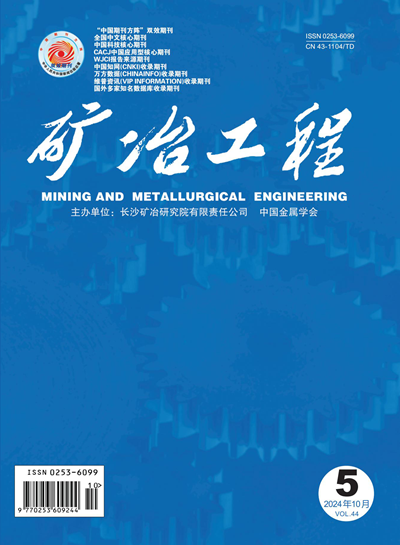Water Model Study on the Effect of Slag Layer on the Motion and Melting of Scrap Steel in Ladle
引用次数: 0
Abstract
Scrap steel is a green renewable resource that can be recycled. Increasing the scrap ratio is bene-* ficial to saving energy and reducing carbon emissions, which is of great importance to realizing carbon neutralization in the iron and steel industry. In recent years, many plants have increased the use of scrap in steelmaking. However, the melting mechanism of scrap in refining ladle and the influence of the slag layer on the motion and melting of scrap are still unclear. In this paper, based on the principles of similarities of phase transformation number, the ice sphere is used to simulate steel scrap. Besides, the silicone oil with different viscosity is used to simulate the slag layer. In the experiment, the effects of slag layer and gas stirring intensity on the motion, melting and morphology evolution of ice samples were studied. The results showed that the morphology of ice spheres remained spherical during melting in the case without slag. For the cases with the slag layer, the melting rate of ice spheres in different fluids is different, resulting in irregular columnar morphology of ice. The larger the viscosity of the slag layer is, the slower the ice sphere moves on the liquid surface. The viscosity of the slag layer has no obvious effect on the melting time of the ice sphere, but the melting time in the case with the slag layer is lower than that in the case without slag. With the increase of gas flow rate, the slag eye area increases, and the melting time of the ice sphere decreases.渣层对钢包内废钢运动和熔化影响的水模型研究
废钢是一种绿色可再生资源,可以循环利用。提高废品率有利于节能减排,对实现钢铁工业碳中和具有重要意义。近年来,许多工厂在炼钢中增加了废钢的使用。然而,废钢在精炼钢包中的熔化机理以及渣层对废钢运动和熔化的影响尚不清楚。本文基于相变数相似原理,采用冰球对废钢进行模拟。此外,采用不同粘度的硅油模拟渣层。在实验中,研究了渣层和气体搅拌强度对冰样运动、熔化和形貌演变的影响。结果表明:在无渣条件下,冰球形貌保持球形;对于有渣层的情况,不同流体中冰球的熔化速率不同,导致冰的柱状形态不规则。渣层粘度越大,冰球在液体表面的移动速度越慢。渣层粘度对冰球熔化时间无明显影响,但有渣层的冰球熔化时间比无渣层的冰球熔化时间短。随着气体流速的增大,渣眼面积增大,冰球融化时间缩短。
本文章由计算机程序翻译,如有差异,请以英文原文为准。
求助全文
约1分钟内获得全文
求助全文
来源期刊
自引率
0.00%
发文量
5744
期刊介绍:
Mining and Metallurgical Engineering magazine was founded in 1981, is now a bimonthly magazine for domestic and international public circulation, by the Changsha Institute of Mining and Metallurgy Research Limited Liability Company and the China Institute of Metals jointly sponsored, using ‘actively promote the reporting of mining and metallurgy industry new theories, new technologies, new techniques, new equipment, and strive to promote the technical progress of the industry’ as the purpose of the publication. The main columns are Mining, Mineral Processing, Metallurgy, Materials, Mining Economy and Management, etc. It focuses on reporting the cutting-edge dynamics of the mining and metallurgy industry, exchanging mining and metallurgy scientific and technological achievements, technical experience, transmitting mining and metallurgy scientific and technological information, and playing the role of a bridge and a link to turn scientific research achievements into productive forces. The quality of papers in this journal is high, among which the ratio of papers of various fund projects reaches more than 60%. The total score of the comprehensive evaluation of the journal is among the best in the national metallurgical engineering technology core journals.
Mining and Metallurgical Engineering is the first batch of journals awarded as ‘China Journal Square Double Effect Journal’ by the Ministry of Science and Technology and the General Administration of Press and Publication of the People's Republic of China, and it is the national Chinese core journal, Chinese scientific and technological core journal, and the core academic journal of China Science Evaluation and Research Centre, It is a national Chinese core journal, Chinese science and technology core journal, core academic journal of China Science Evaluation and Research Centre, excellent journal of China Society for Metals, excellent publication of China Nonferrous Metals, double top ten journals of Hunan Province, top ten scientific and technological journals of Hunan Province, excellent publication of Hunan Province, selected journal of Hunan Province to cultivate world-class Hunan version of the scientific and technological journals construction project echelon journals building projects, world nonferrous metals high-quality scientific and technological journals classification catalogue of T2 level journals, high-quality scientific and technological journals classification catalogue of Metallurgical Engineering and Technology T3 level journals, China Knowledge Network Academic Journal It has been selected as one of the journals in Q1 area of China Knowledge Network Academic Journals Subject Influence, and selected in World Journal Clout Index (WJCI) report; it has been included in the full text of China Knowledge Network (CKN), China Academic Journal CD-ROM Edition (CAJ CD-ROM), Wanfang Data (WFD), Chongqing Wipo Information (CQWI), Changjiang Literature Library (CKL), etc., and has been included in the American Chemical Abstracts (CA), the Russian Abstracts Magazine (RAS), and the Japanese Science and Technology Literature Express (CBST). It is also included in Chemical Abstracts (CA) of USA, Abstracts Magazine of Russia, Scientific and Technical Literature (CBST) of Japan, Mining and Metallurgy Bulletin of UK and other authoritative foreign abstracts searching organisations.

 求助内容:
求助内容: 应助结果提醒方式:
应助结果提醒方式:


